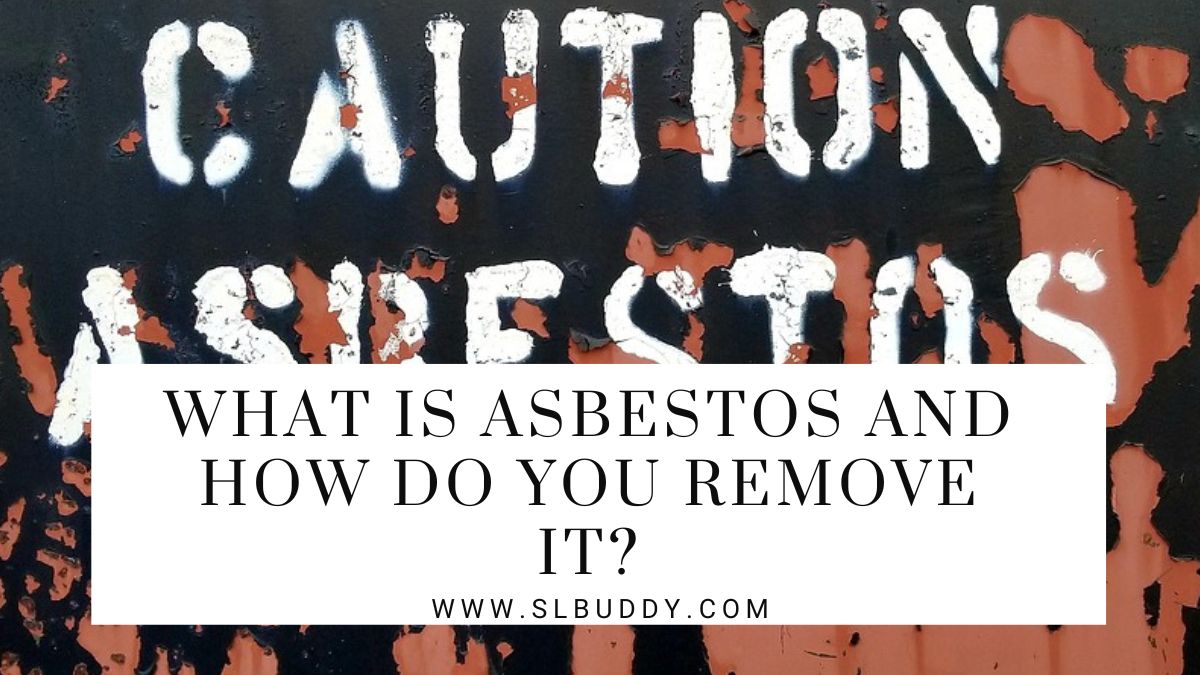
Asbestos, a naturally occurring mineral known for its exceptional heat resistance and durability, has had a complex history.
It was once heralded as a miracle material for its versatility in various industries, from construction to manufacturing.
However, the hidden danger it poses to human health has led to a complete reevaluation of its use and removal practices.
In this blog, we’ll delve into what asbestos is, the health risks associated with its exposure, the removal process, and essential guidelines for safe handling.
What is Asbestos?
Asbestos is a collective term for a group of naturally occurring minerals with fibrous properties.
These minerals, including chrysotile, amosite, and crocidolite, possess characteristics that make them highly desirable for a range of applications.
Their resistance to heat, fire, and chemicals, along with their ability to strengthen materials, led to their widespread use in various industries.
From insulation in buildings to fireproofing materials in ships and vehicles, asbestos was considered a crucial component of modern construction and manufacturing.
Health Risks of Asbestos Exposure
Exposure to asbestos poses significant health risks and can lead to various diseases. One of the most concerning health effects of asbestos exposure is the development of mesothelioma.
Mesothelioma is a rare and aggressive form of cancer that affects the lining of the lungs, heart, or abdomen. It is primarily caused by inhaling asbestos fibers.
The latency period for mesothelioma can be extensive, often taking 20-50 years or more for symptoms to manifest after initial exposure.
In addition to mesothelioma, asbestos exposure increases the risk of developing lung cancer. Inhalation of asbestos fibers can cause genetic mutations in lung cells, leading to the development of cancerous tumors.
It’s important to note that the risk of lung cancer is even higher for individuals who are exposed to both asbestos and who smoke.
Asbestosis is another serious health condition associated with asbestos exposure. Prolonged inhalation of asbestos fibers can result in scarring and fibrosis of the lung tissue, leading to asbestosis.
Symptoms of asbestosis may include shortness of breath, persistent cough, chest tightness, and respiratory difficulties. This condition can significantly impair lung function and quality of life.
Exposure to asbestos can also result in various pleural disorders. The pleura is the protective membrane surrounding the lungs.
Inhalation of asbestos fibers can cause inflammation and thickening of the pleural membranes, resulting in conditions such as pleural plaques, pleural effusions, and pleuritis. These conditions can cause pain, breathing difficulties, and other respiratory issues.
Furthermore, asbestos exposure has been linked to an increased risk of other cancers beyond mesothelioma and lung cancer.
Ovarian, laryngeal, and gastrointestinal cancers have been associated with asbestos exposure. The mechanisms through which asbestos contributes to the development of these cancers are still under investigation.
It’s important to note that the health effects of asbestos exposure are not immediate and can take years or even decades to manifest.
Therefore, early detection, prevention, and proper removal of asbestos-containing materials are crucial to minimizing the risk of these diseases.
Common Sources of Asbestos Contamination
Asbestos can be found in a variety of environments, ranging from older residential buildings to industrial facilities.
In residential settings, it might be present in insulation, roofing materials, and floor tiles. In the industrial realm, it was used in machinery, pipes, and construction materials.
Even natural deposits of asbestos can pose a risk to nearby communities. Furthermore, demolition and renovation activities in structures containing asbestos can release fibers into the air, increasing the potential for exposure.
Asbestos Testing and Inspection
To ascertain the presence of asbestos in a building, thorough testing and inspection are essential. DIY testing kits are available, but due to the potential risks involved, hiring professionals for accurate and safe testing is recommended. The team behind GBAR Group emphasizes that certified professionals should perform asbestos testing, inspection, and removal for several reasons.
Firstly, trained inspectors can assess the material, collect samples, and analyze them in a certified laboratory.
Their proficiency is unmatched when it comes to identifying and managing asbestos in various environments.
The process involves meticulous sample collection and analysis to detect the presence of asbestos fibers.
This is no simple task, as these fibers are often invisible to the naked eye. If asbestos is detected, it’s crucial to follow proper removal procedures to ensure the safety of occupants and workers.
By utilizing cutting-edge technology and adhering to stringent protocols, certified asbestos inspection and removal companies ensure accurate results that pave the way for informed decision-making.
If asbestos is detected, their experts guide clients through the necessary steps, from containment to removal, all while prioritizing safety.
In a world where the hazards of asbestos are a reality, partnering with experts in asbestos removal is an essential stride toward safeguarding human health and the environment.
Their commitment to excellence aligns perfectly with the urgency of managing asbestos-related risks effectively.
Asbestos Removal Process
Asbestos removal is a complex process that demands precision and adherence to strict safety protocols.
When dealing with asbestos-containing materials, containment is key to preventing the spread of fibers. Licensed professionals are equipped with the necessary expertise and protective gear to execute the removal safely.
The process involves isolating the area, wearing specialized clothing, wetting materials to minimize fiber release, carefully removing the contaminated materials, and sealing them in secure containers for proper disposal.
Thorough cleaning of the area post-removal is equally important to eliminate any residual fibers.
Legal Regulations and Guidelines
Given the serious health risks associated with asbestos exposure, various regulatory bodies have established guidelines and regulations for its safe handling and removal.
The Environmental Protection Agency (EPA) in many countries sets forth specific requirements for asbestos abatement projects.
These regulations address factors such as notification, proper disposal, worker safety, and record-keeping. Compliance with these guidelines is essential to safeguard human health and the environment.
Safe Handling and Prevention
While licensed professionals are best suited for asbestos removal, homeowners and DIY enthusiasts should also be aware of potential risks.
Avoiding disturbing asbestos-containing materials is the safest approach. These materials should not end up in trash bins or dumpsters, where they pose a significant health risk.
If unsure about the presence of asbestos, it’s wise to consult experts before undertaking renovation or repair work.
Additionally, raising awareness among communities and workers about the dangers of asbestos exposure is crucial for promoting safe practices.
Alternatives and Substitutes for Asbestos
The discovery of asbestos-related health risks has driven the development of safer alternatives and substitutes.
Modern insulation, roofing, and construction materials now focus on durability, thermal efficiency, and fire resistance while eliminating the risks associated with asbestos.
By adopting these innovative solutions, industries can continue to thrive while ensuring the well-being of workers and consumers alike.
Don’t miss: 6 Ways Sheet Metal is Used in Construction
The bottom line
In the evolution of human knowledge and technology, asbestos has gone from being a celebrated solution to a hidden danger.
Understanding the risks associated with asbestos exposure and adhering to proper removal protocols is paramount to protecting human health and the environment.
By promoting awareness, following regulations, and embracing safer alternatives, we can move forward in a world where progress and well-being coexist. Remember, responsible asbestos management today safeguards a healthier tomorrow.














